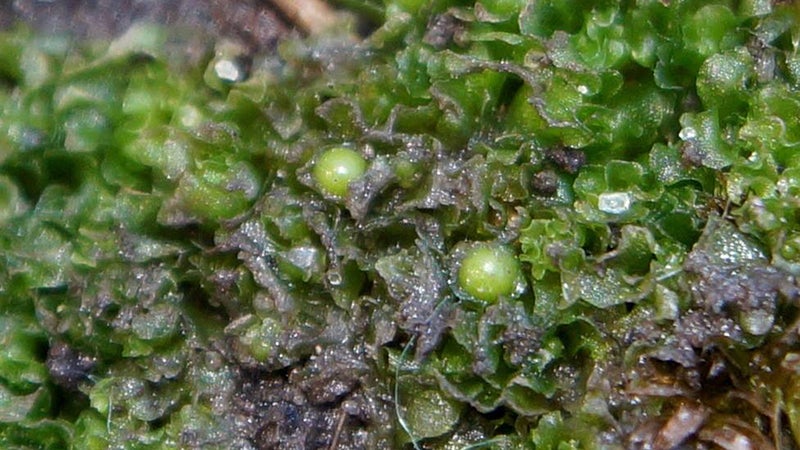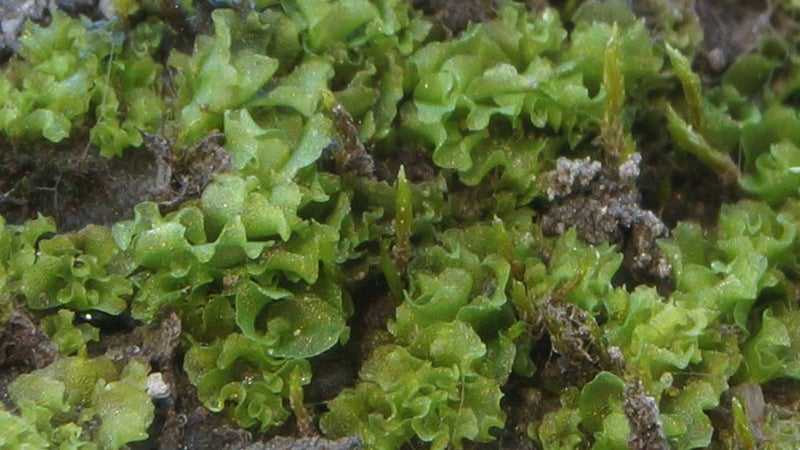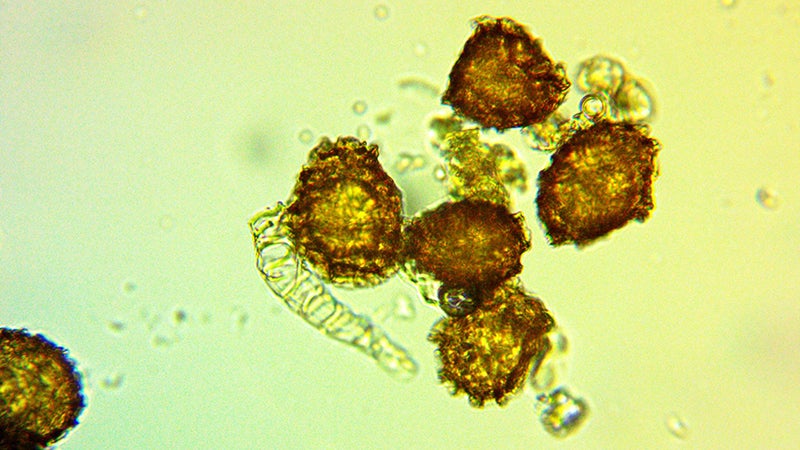A state record
Published 3:38 pm Friday, January 11, 2019
|
Getting your Trinity Audio player ready...
|
Helen Hamilton
Last fall, John Bunch, a Master Naturalist in Suffolk, posted a photo of a flat (thalloid) liverwort with fluffy edges that he found in the Dismal Swamp area of Suffolk. Easy to identify, the genus Fossombronia has ruffled edges, a pale green color and purplish rhizoids. This unusual liverwort appears in summer and makes its spores in the fall, then disappears — it’s an annual that depends upon numerous spores for reproduction.
So John installed the plant in peaty soil in his greenhouse and the spores appeared. Fossombronia can be identified to species only by the characteristics of the spores, so as they matured, John sent me some spores glued to a microscope slide. The spores produce elaters stiffened with spiral or annular wall thickenings that aid in spore dispersal. The elaters on these spores seem to be more band-shaped than spiral.
This led to discussion on the Facebook page “VNPS Ferns, Fungi, Lichens and Mosses,” principally by Tom Wieboldt, retired curator of the Massey Herbarium at VPI. Tentative identification places this specimen in the genus F. cristula, never before seen in the state of Virginia, although it is frequent in neighboring North Carolina. So we (John and I) are sending all material to Tom for accession into the VPI Herbarium.
Often a state record of a vascular plant can indicate movement of the plant into new habitat (ie, climate change?) as Donna Ware indicated in her article on the Houstonia micrantha, a southern species now seen in our area. But a state record for a moss or liverwort usually occurs because no one has collected the plant — there are not many working “bryologists” out there bent over hand lens, viewing tiny plants, but John Bunch is one of them.
HELEN HAMILTON is past president of the John Clayton Chapter, Virginia Native Plant Society. Contact her at helen48@cox.net. For more information about native plants, visit www.vnps.org.






